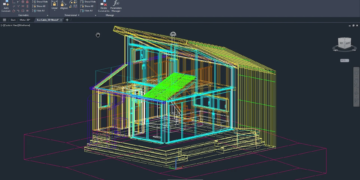Concrete barriers and their water-filled counterparts serve distinct roles in traffic management and site safety. Each offers unique advantages tied directly to their materials and intended use. Concrete barriers are the heavyweights, designed for long-term applications. Built from a robust mix of cement, aggregates, and water, they form a durable, often permanent fixture for guiding traffic or protecting work zones and pedestrians in high-activity areas. Water-filled barriers represent the adaptable alternative. Made from tough polymer shells filled with water for ballast, they provide a lightweight option ideal for temporary situations – think special events or short-term road closures. Understanding their core differences in construction, durability, and cost impacts selection for specific project needs.
Composition and Construction
Concrete barrier blocks are typically precast, involving the pouring of a cement mixture into forms to cure into solid blocks. Water-filled barriers begin as hollow plastic shells, often rotationally moulded polyethylene. They gain their mass and stability only when filled with water on-site. Installation methods diverge sharply. Setting concrete barriers requires heavy machinery like cranes or large forklifts due to their significant weight. Water-filled units, being lightweight when empty, are far more portable. Small crews can often manually position them, making them ideal for rapid deployment or temporary setups that require flexibility.
Function and Purpose
Long-term deployment is concrete’s domain. These barriers are standard for establishing permanent or semi-permanent traffic control, enhancing roadside safety, securing perimeters, or delineating construction zones over extended durations. Their mass provides significant positive protection, effectively redirecting vehicles and shielding vulnerable areas. People frequently use high-traffic corridors. Water-filled barriers fulfill shorter-term needs. Common uses include temporary traffic control (TTC) for brief roadwork, channelling crowds at festivals, or creating secure zones for events. Adaptability is their key strength. They can be filled when in use and emptied for easy removal or repositioning. This suits dynamic sites where layouts are likely to change.
Durability and Longevity
Concrete barriers are strong. They can withstand severe weather, car accidents (depending on the design, meeting different crashworthiness criteria), and environmental exposure with minimal deterioration. Their structural integrity offers decades of operation with minimal maintenance. Usually, water-filled barriers break more quickly. Damage from UV and punctures can weaken plastic shells. Unlike concrete, performance depends on maintaining ballast water levels. They offer short-term respite but are not permanent fixes.
Cost and Maintenance
Budget considerations differ. Concrete barriers typically have a higher initial cost due to the material’s heavy transport and specialised installation equipment. However, their durability and low maintenance needs often lead to lower lifecycle costs for permanent installations. Water-filled barriers typically boast lower upfront purchase and transport costs (when empty). This appeals to temporary projects or entities with constrained capital budgets. Ongoing costs can accumulate, though. Factor in potential repairs: labour for filling and emptying, water sourcing, and eventual replacement due to wear. The most economical choice hinges on the project’s duration and operational context.
Conclusion
Ultimately, selecting between concrete and water-filled barriers depends heavily on project-specific factors, including duration, budget, required protection level, and site logistics. Concrete delivers unparalleled robustness and longevity for permanent structures that require high containment. Water-filled barriers offer flexibility and a lower initial outlay, making them ideal for temporary scenarios that require rapid deployment and adaptability. An informed choice weighs these distinct traits to ensure the barrier system effectively meets safety and operational goals.
Image attributed to Pexels.com













